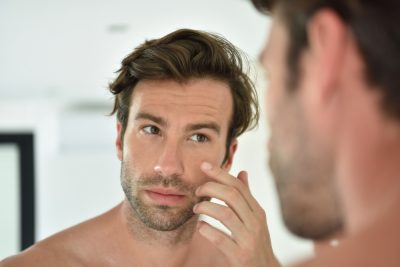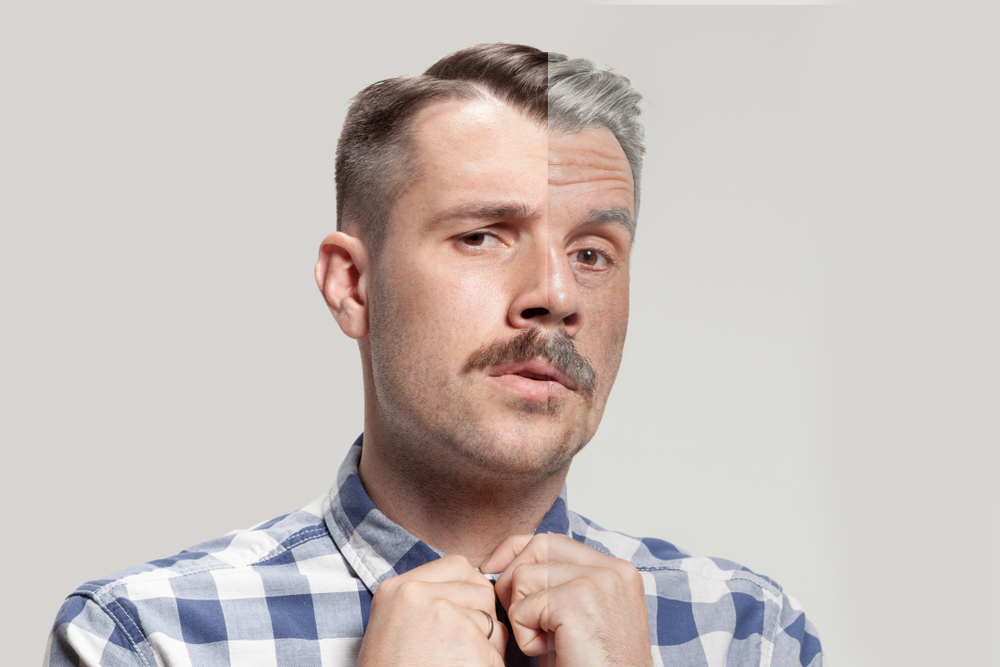When you get older, your body begins to slow down on internal processes and takes longer to complete workout recovery. As a result of this, you might start to see signs of aging, such as sun spots, wrinkles, etc.
Sometimes, these changes happen earlier than expected. Hence it is termed “premature aging.”
However, these changes can not be prevented, but there are measures you can implement to reduce the signs of aging, most especially if you are experiencing them earlier than projected.
Firstly, let’s look out the signs of premature to watch out for.
Signs of Premature Aging
The aging process varies for different individuals, but there are general signs of aging that are considered premature, especially if you experience them before turning 35.
Gaunt Hands
As you age, the top layer of your skin begins to lose its thickness and becomes thinner. When this happens, it contains less structuring proteins like collagen responsible for shaping your skin.
You may begin to notice your hands becoming thinner and veinier, plus it becomes susceptible to wrinkles. There is no specific metric for when your hands should start to look older or get wrinkles, but it happens to most people when they are in their late 30s or early 40s.
Dry and Itchy Skin
Dry or itchy skin can sometimes be called “xerosis cutis,” It can frequently happen as you get older. This occurs as a result of your skin becoming dehydrated due to the fact you are experiencing thinning of the skin.
As you age, you may notice your skin turning drier and susceptible to flaking, but if this occurs before the age of 35, then it’s a sign of premature aging.
Sun Spots
 Sun spots can also be called liver spots or even age spots, and they are spots that appear on your skin, due to prolonged over-exposure to the sun.
Sun spots can also be called liver spots or even age spots, and they are spots that appear on your skin, due to prolonged over-exposure to the sun.
These hyper-pigmented spots are usually flat, and they can appear on the forearms, skin, or back of the hands. You are more likely to develop it on your face and neck, as those areas are more exposed to the sun.
These spots develop when you approach your 40s, and people with very light skin like Fitzpatrick type 1 and 2, have a higher risk of developing these spots earlier.
Hyperpigmentation on the Chest
Most people develop patchy discoloration or inflammation along the chest area, as they age. The patchy discoloration is similar to sun spots, but it differs because the former happens when there is damage to your body cells due to over-exposure to the sun.
However, this kind of Hyperpigmentation occurs not only as a result of aging but also due to other skin conditions that harm the skin’s melanin cells.
Skin conditions such as eczema and vitiligo can cause Hyperpigmentation, and there isn’t a specified age for when this can happen.
Hair Loss
Hair loss occurs when the stem cells that stimulate the growth of new hair in the hair follicles die off. Many factors are responsible for how quickly this can happen; it can be caused by hormonal changes, environmental factors, diets, and even genetics.
Men who are above 50 experience hair loss more than those in their mid-30s. However, if it happens before you are ready to embrace the change, there are treatments available to speed up hair recovery.
Wrinkling and Sagging
When you approach your early 30s, your skin begins to reduce its collagen production and the protein that shapes the skin.
Collagen is responsible for making your skin look plump and bouncy. When there is a decreased level of collagen in the body, your body begins to show signs of wrinkling and sagging.
This can happen in areas like the muscles, forehead, and the other regions where you expose more to the sun.
The age when people develop wrinkles varies for different individuals, and there isn’t a standard metric to define when it is premature. Although, if it happens before the age of 30, it can be considered “a sign of premature aging.”
In rare instances, aging might not be the cause of wrinkling or sagging of the skin; it can be from excess dirt on the skin or even dehydration.
Factors That Trigger Premature Aging in Men
Various factors can stimulate aging in men, and some variables can hasten how soon the signs reflect on your body.
These include:
Genes
In rare cases, you can have a genetic disorder that would result in you showing signs of aging during early puberty and sometimes during childhood. This condition is referred to as “progeria.”
Werner syndrome is another rare condition that affects about 1 in 1 million people, and the symptoms of this health condition include graying hair, wrinkled skin, and balding.
Having this condition would lead mostly result in premature aging, as the symptoms are very much related.
Another rare condition that also results in developing signs of premature aging is Hutchinson-Gilford syndrome. This condition results in stunted growth and makes children not grow as fast as their peers.
The symptoms of Hutchinson-Gilford syndrome include balding and thinning of the limbs. Sadly, the average life expectancy for children with this condition is 13 years.
Smoking
Excess smoking can expose your skin to unwanted oxidative stress, and this can lead to dryness. It can further cause wrinkling of the skin and other symptoms associated with premature aging.
Over Exposure to Sun
UV rays penetrate the skin and can cause damage to the DNA in your skin cells. This damage can lead to wrinkling and sagging of the skin.
Other factors can contribute to how fast a man shows signs of aging. Such as:
Diet
Eating diets high in sugar and refined carbohydrate can, over time, cause some severe damage to your skin. Healthy foods containing all the necessary vitamins and nutrients would keep our skin thick and supple.
Environmental Factors
Environmental impurities can stimulate age spots, pigment spots, and wrinkles. Your skin comes in direct contact with the air in your surrounding, and this makes your skin subjected to the contaminants and impurities in the environment.
This can cause your skin to appear dry, and with time, it may become flaky.
Sleeping Patterns
Getting enough sleep is essential, as it gives your body enough time to refreshen and also helps your skin regenerate its cells.
A certain study has shown that lack of sleep or poor sleeping quality is related to the triggering of premature aging signs in men. And sleeping poorly would lead to diminished skin barrier performance, making your skin look dull and, over time, show signs of wrinkling.
Caffeine and Alcohol Intake
 Excessive intake of alcohol or caffeine can dehydrate our body. When your body is dehydrated, it begins to tell on your skin, which can cause it to wrinkle and lose its elasticity.
Excessive intake of alcohol or caffeine can dehydrate our body. When your body is dehydrated, it begins to tell on your skin, which can cause it to wrinkle and lose its elasticity.
You should know that caffeine’s constant intake can cause the skin to wrinkle, making you appear older than you are.
Stress
Stress is a significant factor that triggers signs of premature aging in men. A stressful lifestyle can cause an inflammatory response from your body, which can disrupt your sleep pattern.
Inflammation and stress hormones are two primary causes as to why your body is aging faster than it should.
What to do When You Notice Signs of Premature Aging
Once you become aware of the first signs of premature aging, you can implement measures to correct or manage these signs or allow nature to take its course.
There are various remedies you can try out, such as:
Remedy for Gaunt Hands
If your hands are translucent and the veins become visible, then you have gaunt hands. However, this can be treated by frequently moisturizing your hands.
Every time you give a trial to new products that promise to lock in hydration, you should get a sunscreen with a minimum of 30SPF and apply it on your hands regularly.
If your hands are regularly being exposed to chemicals and pollutants, probably due to your work or household duties, there might be little you can do to prevent exposure.
However, you can implement little changes like wearing gloves, plus you can also speak to a dermatologist if you are worried about the condition of your hands.
Remedy for Dry and Itchy Skin
If you are experiencing dryness or itchiness on your skin, you should immediately consult your dermatologist to rule out other possible health conditions.
Once it has been diagnosed that this sign is a result of aging and not any medical condition, you can focus more on your lifestyle.
Increase your intake of water daily, so you can keep your body properly hydrated and take your shower with lukewarm water.
Try to understand the actual cause as to why your skin is itchy and dry, so you can determine what treatment to pursue.
Also, find a moisturizer that is perfect for your skin type and apply it daily. If this doesn’t help, you can speak to your dermatologist about prescribing a stronger moisturizer to protect your skin.








COMMENTS